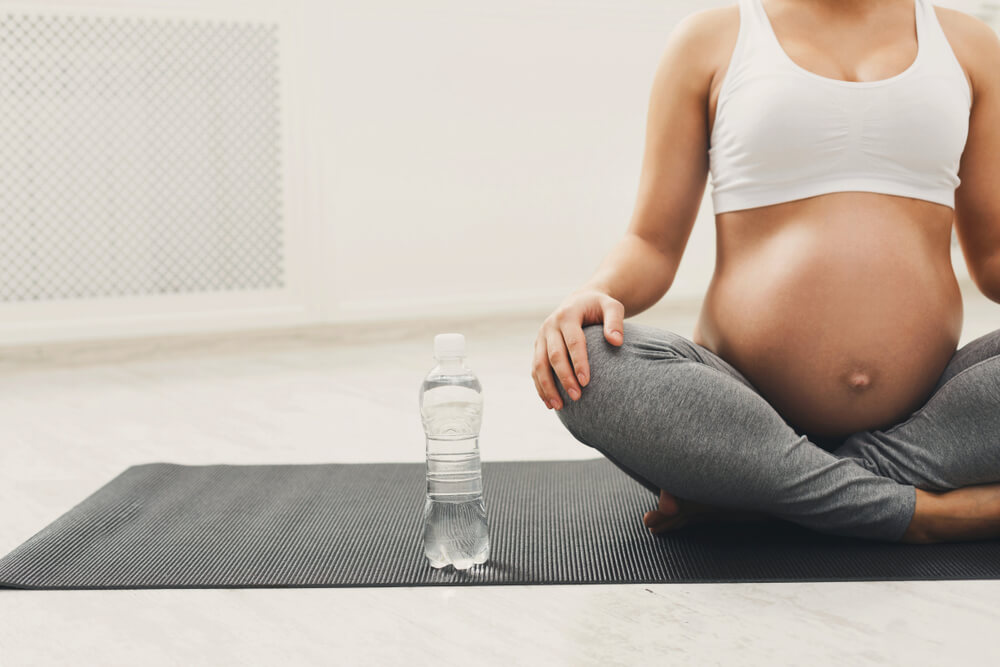“Can I do yoga while pregnant”? If you’ve been living a life committed to exercising and being active, giving yoga a try might have popped into your mind after finding out that you’re pregnant. Well, is it a good idea?
In this article, the expert team at My OBGYN Specialists discusses the benefits of prenatal yoga, the necessary safety precautions you need to take, and the safest prenatal yoga poses. Hopefully, by the end of the article, you’ll gain more insight into this topic and be able to create a yoga routine for you that will match your needs.
About Prenatal Yoga
In a nutshell, prenatal yoga is an excellent way for expecting mothers to stay active during pregnancy. Prenatal yoga offers both physical and mental benefits thanks to its low impact and gentle nature. The exercise engages both the body, the mind, and the spirit, focusing on gentle strengthening, stretching, and mental centering, while also developing a better awareness of your breathing.

Exploring The Benefits of Prenatal Yoga
Why should you give prenatal yoga a try? Here are its main benefits:
It’s an Effective Exercise Method
Paired with other forms of light cardiovascular exercise, such as brisk walks, prenatal yoga can be an excellent way to stay in shape while pregnant. Prenatal yoga can help mothers-to-be keep their muscle tone, their limber and improve their circulation and balance while being gentle on their joints.
Fewer Chances of Pregnancy Complications
Data from a review of ten research studies suggest that prenatal yoga can lower the chance of experiencing pregnancy complications. Furthermore, safe prenatal yoga poses may help reduce stress and pain levels. Also, it may possibly lower the risk of having a baby who is small for their gestational age.
Prenatal Yoga Can Help You Prepare for Labor and Birth
Practicing prenatal yoga can help you with learning proper breathing techniques. Ujjayi, the name of the breathing technique used in yoga, involves taking the air in slowly through the nose, filling up the lungs and expanding the belly, and exhaling through the nose until you see your stomach compressing. This technique can help you become more focused, helps you with relaxation, and may be able to help you face the challenges of labor and birth more effectively.
Helps With Focus, Relaxation, and Calmness
As mentioned above, ujjayi will help you keep your cool when you need it the most. In times of pain or fear, your body releases adrenaline, which can reduce the production of oxytocin—a hormone crucial for labor progress. Embracing a consistent yoga practice can help you resist the natural instinct to tense up when experiencing pain. Through relaxation techniques in yoga, you’ll develop the ability to manage stressful situations more effectively, empowering you to handle challenges with greater ease.
Finding a Helpful Community
The benefits of prenatal yoga aren’t just limited to your physical well-being and pregnancy. Prenatal yoga classes can be a great way to meet other mothers-to-be and become an integral part of a community where women can be supportive of each other, helping each other stay motivated to keep on exercising when things get difficult.
Best Prenatal Yoga Poses
Below, we’ll discuss the safest and most beneficial yoga poses you can do while pregnant.
Pelvic Tilt or Angry Cat
This position can help alleviate back pain, which is often experienced during pregnancy.
Get down on your hands and knees, ensuring your arms are shoulder-width apart and your knees are hip-width apart. Keep your arms straight but avoid locking your elbows.
As you inhale, tuck your buttocks under and round your back. Exhale and allow your back to relax into a neutral position. Repeat this movement at your own comfortable pace to find relief.
Tailor’s or Cobbler’s Pose
This is a sitting pose that will help you open your pelvis. Just sit up against the wall and have the soles of your feet touching one another. Then, press your knees down gently, far away from one another, but ensure not to force them apart. Now, try to stay in this pose for as long as you feel comfortable.

Side-Lying Position
This resting pose is perfect to conclude your yoga practice.
Lie on either your left or right side, resting your head on your arm or a blanket for added comfort.
Place a body pillow or roll a blanket between your thighs to support your hips.
In a yoga class setting, your instructor may lead you through calming breathing exercises while in this position. Enjoy the relaxation and rejuvenation that this pose brings.
There are also several other yoga poses that you may try, including the modified pigeon pose, the standing warrior, and several hip rotations. These are capable of opening your pelvis, improving your balance, and strengthening your joints. On that note, warrior poses may also help you with sciatica and backaches.
Prenatal Yoga: Safety Above All Else
Naturally, you’ll need to be extra cautious, as with every form of exercise when you’re pregnant. Below are some helpful things you should consider before starting prenatal yoga.
- Consult with your provider: Before committing to prenatal yoga, check with your provider to see if they give the green light. When you have the go-ahead, find a good instructor trained in prenatal yoga.
- Take general precautions: Ensure that you are following general safe pregnancy recommendations.
- Take things easy: if you are already a seasoned yoga enthusiast, you will have to dial the intensity back a bit as your body changes. Listen to your body and make small adjustments on the go. Don’t force anything, and take a break if you feel tired.
- Monitor bodily changes: Your body will change throughout the pregnancy, which means that you’ll have to be cautious when sinking into the different poses. As the baby grows, your sense of balance will also change, so take your time and perform your routine mindfully.
- Don’t lay on your back: This is highly recommended, especially after the third trimester. This can put unwanted pressure on the inferior vena cava, the vein that returns the blood from your legs to your heart. This can make you nauseous, feel dizzy, and may even reduce the blood flow to the uterus.
- Avoid holding poses for long: Keep moving. Holding poses for too long may put unwanted pressure on your body.
- Skip poses that require extreme abdominal stretching: backbends, deep twists, and forward bends may lead to injury. Avoid poses that are uncomfortable or lead to soreness in your muscles.
- Skip your routine in humid and hot conditions: avoid hot yoga classes, as they may lead to overheating.
If You Want To Learn More
Prenatal yoga can be an excellent way to keep your body and mind in shape while pregnant. Still, it’s important to perform the poses safely and follow your provider’s and yoga instructor’s safety instructions.
On that note, feel free to reach out to our experts, who can help you learn more about prenatal yoga. Schedule your appointment today.


